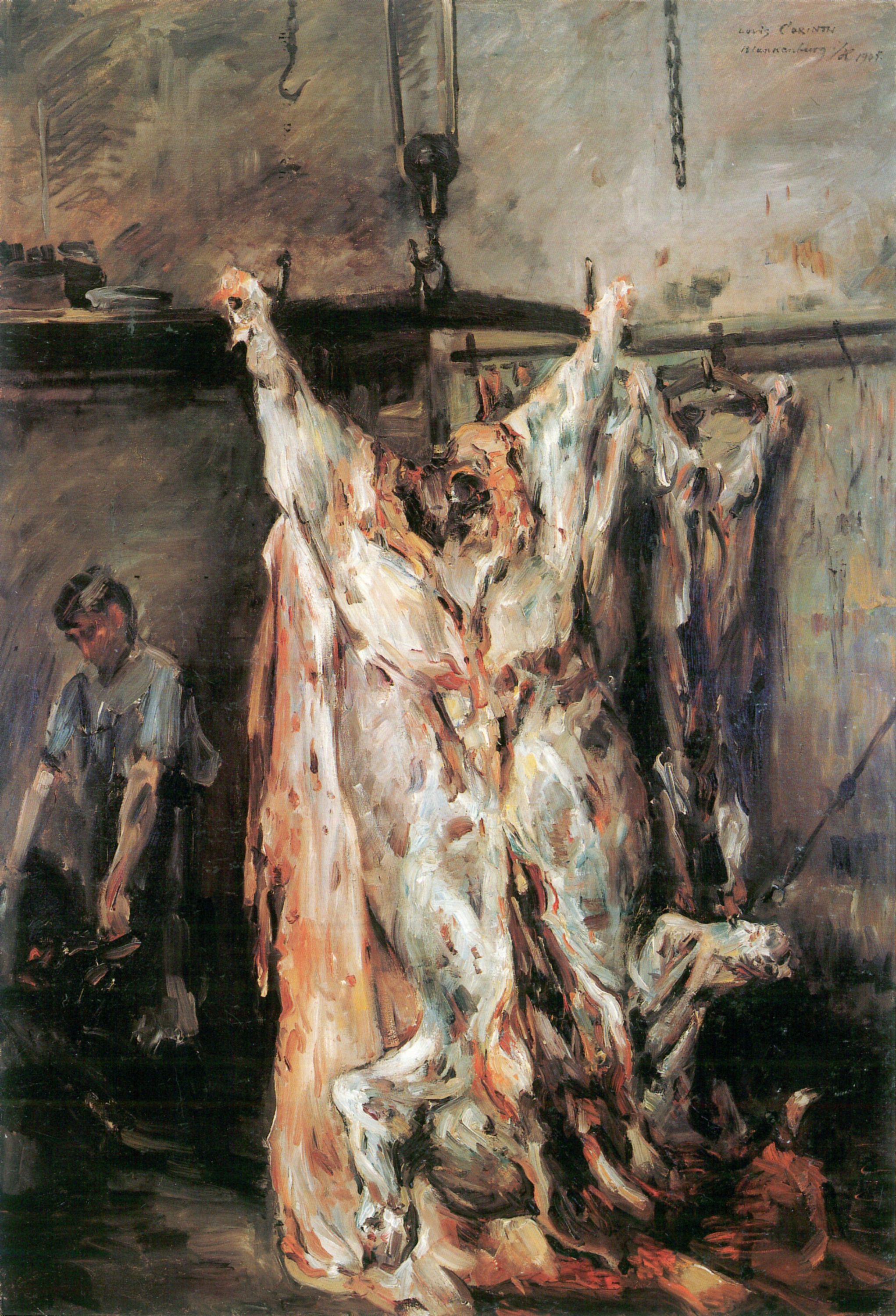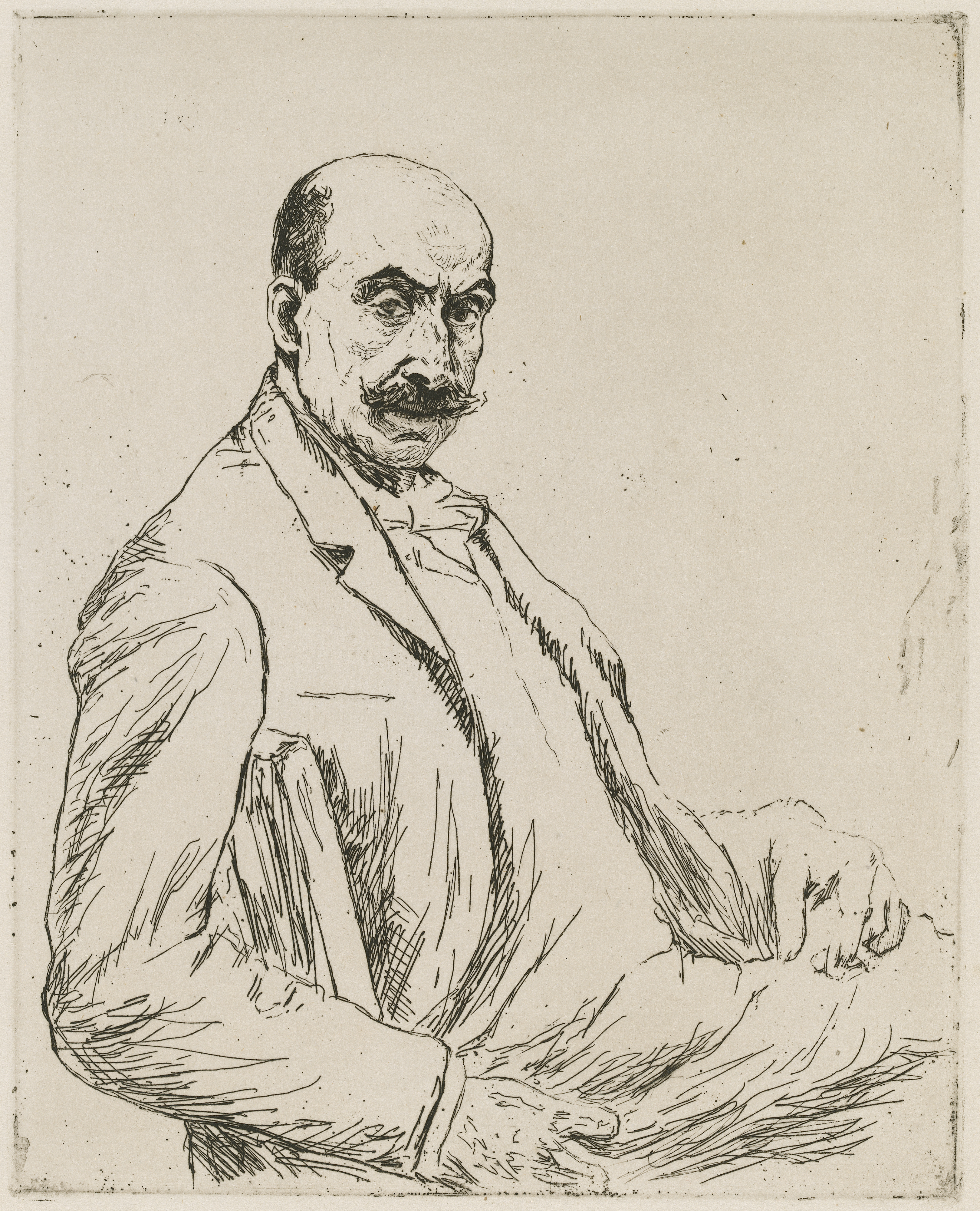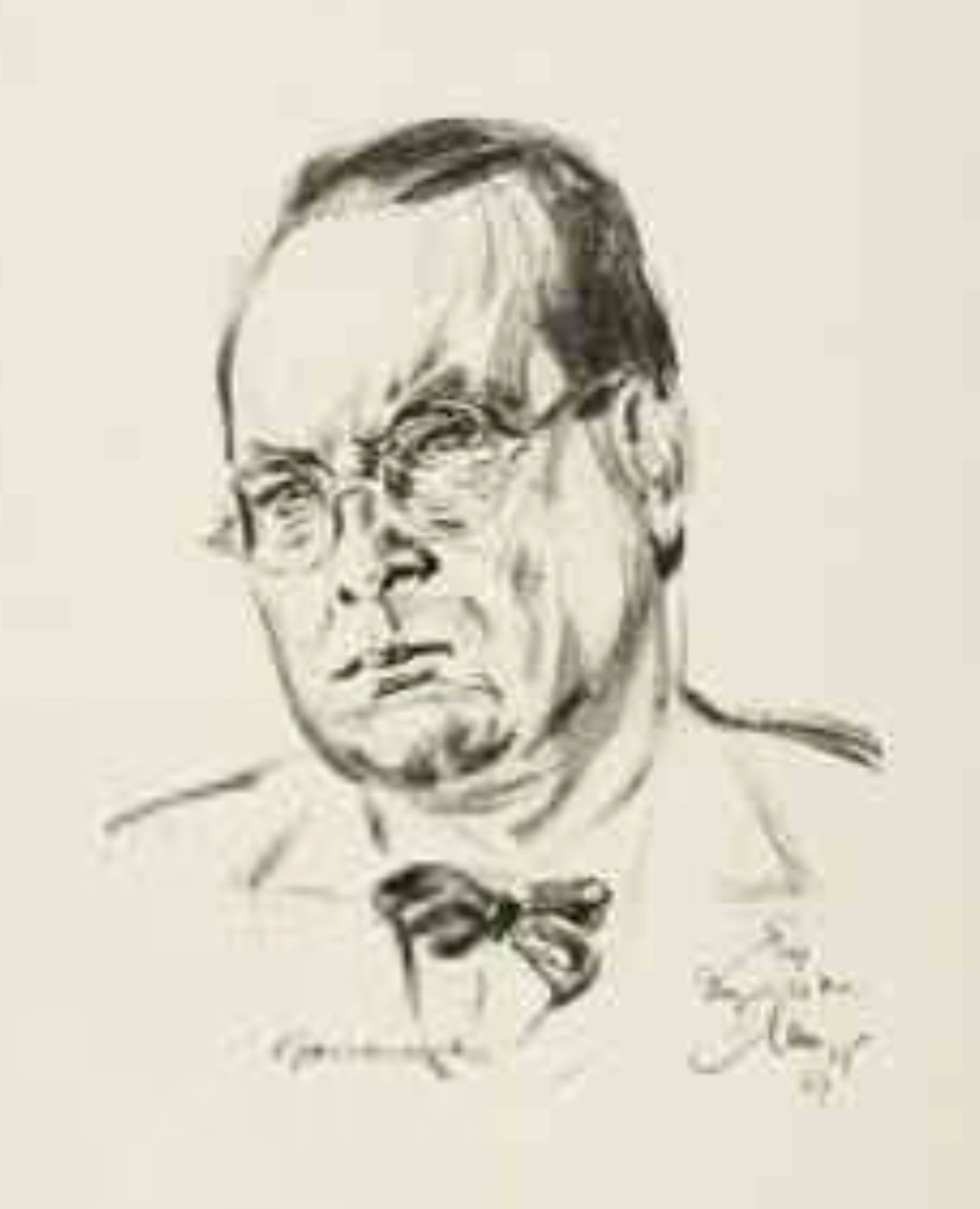|
Deutscher Künstlerbund
The Deutscher Kuenstlerbund (Association of German Artists) was founded in 1903 the initiative of Count Harry Kessler, promoter of arts and artists, Alfred Lichtwark, director of the Hamburg Art Gallery and the famous painters Lovis Corinth, Max Klinger and Max Liebermann among others. Thus a supra-regional association which surpassed the existing secessions came into existence for the first time. Its founders were determined to get rid of the restrictions imposed by the national cultural authorities. Their aim was to ensure the freedom of art, to offer a public forum for different artistic trends and to support young artists. These intentions were taken into account at annual exhibitions which took place in various German cities and sometimes in foreign countries. History The Deutscher Künstlerbund organized first exhibition on June 1 to October 31, 1904 and the second on May 2 to October 6, 1905, inaugurating at the same time its showrooms in the new exhibition building, ... [...More Info...] [...Related Items...] OR: [Wikipedia] [Google] [Baidu] |
Harry Graf Kessler
Harry Clemens Ulrich Graf von Kessler (23 May 1868 – 30 November 1937) was an Anglo-German count, diplomat, writer, and patron of modern art. English translations of his diaries "Journey to the Abyss" (2011) and "Berlin in Lights" (1971) reveal anecdotes and details of artistic, theatrical, and political life in Europe, mostly in Germany, from the late 19th century through the collapse of Germany at the end of World War I until his death in Lyon in 1937. Family Harry Kessler's parents were the Hamburg banker Adolf Wilhelm Graf von Kessler (24 November 1838 – 22 January 1895) and Alice Harriet Blosse-Lynch (born 17 July 1844 in Bombay; died 19 September 1919 in Normandy), the daughter of Anglo-Irish Henry Blosse Lynch, C.B., of Partry House, County Mayo. Kessler's parents married in Paris on 10 August 1867; Kessler was born, also in Paris, in 1868. Kessler's younger sister was born in 1877, and was named Wilhelmina after Kaiser Wilhelm I, who became the child's godfather. Af ... [...More Info...] [...Related Items...] OR: [Wikipedia] [Google] [Baidu] |
Alfred Lichtwark
Alfred Lichtwark (14 November 1852 – 13 January 1914) was a German art historian, museum curator, and art educator in Hamburg. He is one of the founders of museum education and the art education movement. Background and career Alfred Lichtwark was the son of Herr Johann Karl Ernst Lichtwark, a minor lord who owned the Reitbrook Mill. From his father's first marriage he had three half-siblings. Alfred Lichtwark's mother Johanne Helene Henrietta (née Bach) (1829–1909) was believed to be a direct descendant of the composer Johann Sebastian Bach. Lichtwark had a happy childhood in the countryside with his siblings Hans and Marianne (1857–1930) until 1858, when his father was forced to sell the mill for financial reasons. The family moved to Hamburg, where his father ran an inn which fared poorly, and the family lived in poverty. Lichtwark, who attended the civil school, proved to be very talented and versatile, helping students after school as an assistant teacher. In 18 ... [...More Info...] [...Related Items...] OR: [Wikipedia] [Google] [Baidu] |
Lovis Corinth
Lovis Corinth (21 July 1858 – 17 July 1925) was a German artist and writer whose mature work as a painter and printmaker realized a synthesis of impressionism and expressionism. Corinth studied in Paris and Munich, joined the Berlin Secession group, later succeeding Max Liebermann as the group's president. His early work was naturalistic in approach. Corinth was initially antagonistic towards the expressionist movement, but after a stroke in 1911 his style loosened and took on many expressionistic qualities. His use of color became more vibrant, and he created portraits and landscapes of extraordinary vitality and power. Corinth's subject matter also included nudes and biblical scenes. Early life Corinth was born Franz Heinrich Louis on 21 July 1858 in Tapiau, in the Province of Prussia in the Kingdom of Prussia. The son of a tanner, he displayed a talent for drawing as a child. In 1876 he went to study painting in the academy of Königsberg. Initially intending to be ... [...More Info...] [...Related Items...] OR: [Wikipedia] [Google] [Baidu] |
Max Klinger
Max Klinger (18 February 1857 – 5 July 1920) was a German artist who produced significant work in painting, sculpture, prints and graphics, as well as writing a treatise articulating his ideas on art and the role of graphic arts and printmaking in relation to painting. He is associated with symbolism, the Vienna Secession, and Jugendstil (Youth Style) the German manifestation of Art Nouveau. He is best known today for his many prints, particularly a series entitled '' Paraphrase on the Finding of a Glove'' and his monumental sculptural installation in homage to Beethoven at the Vienna Secession in 1902.Delevoy, Robert L. (1978) ''Symbolists and Symbolism''. Skira/Rizzoli International Publications, Inc., New York, 247 pp. Cassou, Jean (1979) ''The Concise Encyclopedia of Symbolism''. Chartwell Books, Inc., Secaucus, New Jersey, 292 pp Life Klinger was born in Leipzig, Germany to a wealthy and prominent family. He enrolled in the Academy of Fine Arts in Karlsruhe in 1874 ... [...More Info...] [...Related Items...] OR: [Wikipedia] [Google] [Baidu] |
Max Liebermann
Max Liebermann (20 July 1847 – 8 February 1935) was a German painter and printmaker, and one of the leading proponents of Impressionism in Germany and continental Europe. In addition to his activity as an artist, he also assembled an important collection of French Impressionist works. The son of a Jewish banker, Liebermann studied art in Weimar, Paris, and the Netherlands. After living and working for some time in Munich, he returned to Berlin in 1884, where he remained for the rest of his life. He later chose scenes of the bourgeoisie, as well as aspects of his garden near Lake Wannsee, as motifs for his paintings. Noted for his portraits, he did more than 200 commissioned ones over the years, including of Albert Einstein and Paul von Hindenburg. Liebermann was honored on his 50th birthday with a solo exhibition at the Prussian Academy of Arts in Berlin, and the following year he was elected to the academy. From 1899 to 1911 he led the premier avant-garde formation in Germany ... [...More Info...] [...Related Items...] OR: [Wikipedia] [Google] [Baidu] |
National Socialists
Nazism ( ; german: Nazismus), the common name in English for National Socialism (german: Nationalsozialismus, ), is the far-right totalitarian political ideology and practices associated with Adolf Hitler and the Nazi Party (NSDAP) in Nazi Germany. During Hitler's rise to power in 1930s Europe, it was frequently referred to as Hitlerism (german: Hitlerfaschismus). The later related term "neo-Nazism" is applied to other far-right groups with similar ideas which formed after the Second World War. Nazism is a form of fascism, with disdain for liberal democracy and the parliamentary system. It incorporates a dictatorship, fervent antisemitism, anti-communism, scientific racism, and the use of eugenics into its creed. Its extreme nationalism originated in pan-Germanism and the ethno-nationalist '' Völkisch'' movement which had been a prominent aspect of German nationalism since the late 19th century, and it was strongly influenced by the paramilitary groups that emerged afte ... [...More Info...] [...Related Items...] OR: [Wikipedia] [Google] [Baidu] |
Karl Hofer
Karl Christian Ludwig Hofer or ''Carl Hofer'' (11 October 1878, Karlsruhe – 3 April 1955, Berlin) was a German expressionist painter. He was director of the Berlin Academy of Fine Arts. One of the most prominent painters of expressionism, he never was a member of one of the expressionist painting groups, like "Die Brücke", but was influenced by their painters. His work was among those considered degenerate art by the Nazis, but after World War II he regained recognition as one of the leading German painters. Life Hofer was born in 1878 in Karlsruhe. Four weeks after his birth, his father, the military musician Karl Friedrich Hofer, died of a lung disease. Since his mother Ottilie had to earn a living, Karl was housed in 1879 with two great aunts, before he went to live in an orphanage (1884-1892). At the age of 14 Karl began a bookshop apprenticeship, which he completed three years later. In 1896 he met the three years younger German philosopher Leopold Ziegler. In 1 ... [...More Info...] [...Related Items...] OR: [Wikipedia] [Google] [Baidu] |
Willi Baumeister
Willi Baumeister (22 January 1889 – 31 August 1955) was a German painter, scenic designer, art professor, and typographer. His work was part of the art competitions at the 1928 Summer Olympics and the 1932 Summer Olympics. Life Born in Stuttgart in 1889, Baumeister completed an apprenticeship as a decorative painter in his native city from 1905 to 1907, followed by military service (fall 1907–1908). During his apprenticeship, Baumeister also began art studies at the Stuttgart Art Academy (Königlich Württembergische Akademie) (1905–1906), attended Robert Poetzelberger’s drawing class, and took additional lessons from Josef Kerschensteiner. In 1906 he resumed his apprenticeship and, in 1907, completed the trade test. Following his military service, Baumeister continued his studies at the art academy. Dismissed by his teacher Poetzelberger due to lack of talent, he switched into the composition class of Adolf Hölzel, with whom he studied until 1912, where he ... [...More Info...] [...Related Items...] OR: [Wikipedia] [Google] [Baidu] |
Karl Schmidt-Rottluff
Karl Schmidt-Rottluff (Karl Schmidt until 1905; 1 December 1884 – 10 August 1976) was a German expressionist painter and printmaker; he was one of the four founders of the artist group Die Brücke. Life and work Schmidt-Rottluff was born in Rottluff, nowadays a district of Chemnitz, on 1 December 1884. He attended the ''humanistische gymnasium'' (classics-oriented secondary school) in Chemnitz, where he befriended Erich Heckel. He enrolled in architecture at the Sächsische Technische Hochschule in Dresden in 1905, following in Heckel's footsteps, but gave up after one term. Whilst he was there, however, Erich Heckel introduced him to Ernst Ludwig Kirchner and Fritz Bleyl. They all passionately shared similar artistic interests and used architecture as a front to study art. They founded Die Brücke in Dresden on 7 June 1905, with the aim of creating a style that was uncompromising and which renounced all traditions. Its first exhibition opened in Leipzig in November of the s ... [...More Info...] [...Related Items...] OR: [Wikipedia] [Google] [Baidu] |
Non-profit Organisations Based In Berlin
A nonprofit organization (NPO) or non-profit organisation, also known as a non-business entity, not-for-profit organization, or nonprofit institution, is a legal entity organized and operated for a collective, public or social benefit, in contrast with an entity that operates as a business aiming to generate a profit for its owners. A nonprofit is subject to the non-distribution constraint: any revenues that exceed expenses must be committed to the organization's purpose, not taken by private parties. An array of organizations are nonprofit, including some political organizations, schools, business associations, churches, social clubs, and consumer cooperatives. Nonprofit entities may seek approval from governments to be tax-exempt, and some may also qualify to receive tax-deductible contributions, but an entity may incorporate as a nonprofit entity without securing tax-exempt status. Key aspects of nonprofits are accountability, trustworthiness, honesty, and openness to ever ... [...More Info...] [...Related Items...] OR: [Wikipedia] [Google] [Baidu] |
German Artist Groups And Collectives
German(s) may refer to: * Germany (of or related to) ** Germania (historical use) * Germans, citizens of Germany, people of German ancestry, or native speakers of the German language ** For citizens of Germany, see also German nationality law **Germanic peoples (Roman times) * German language **any of the Germanic languages * German cuisine, traditional foods of Germany People * German (given name) * German (surname) * Germán, a Spanish name Places * German (parish), Isle of Man * German, Albania, or Gërmej * German, Bulgaria * German, Iran * German, North Macedonia * German, New York, U.S. * Agios Germanos, Greece Other uses * German (mythology), a South Slavic mythological being * Germans (band), a Canadian rock band * "German" (song), a 2019 song by No Money Enterprise * ''The German'', a 2008 short film * "The Germans", an episode of ''Fawlty Towers'' * ''The German'', a nickname for Congolese rebel André Kisase Ngandu See also * Germanic (disambiguation ... [...More Info...] [...Related Items...] OR: [Wikipedia] [Google] [Baidu] |

.ajb.jpg)



